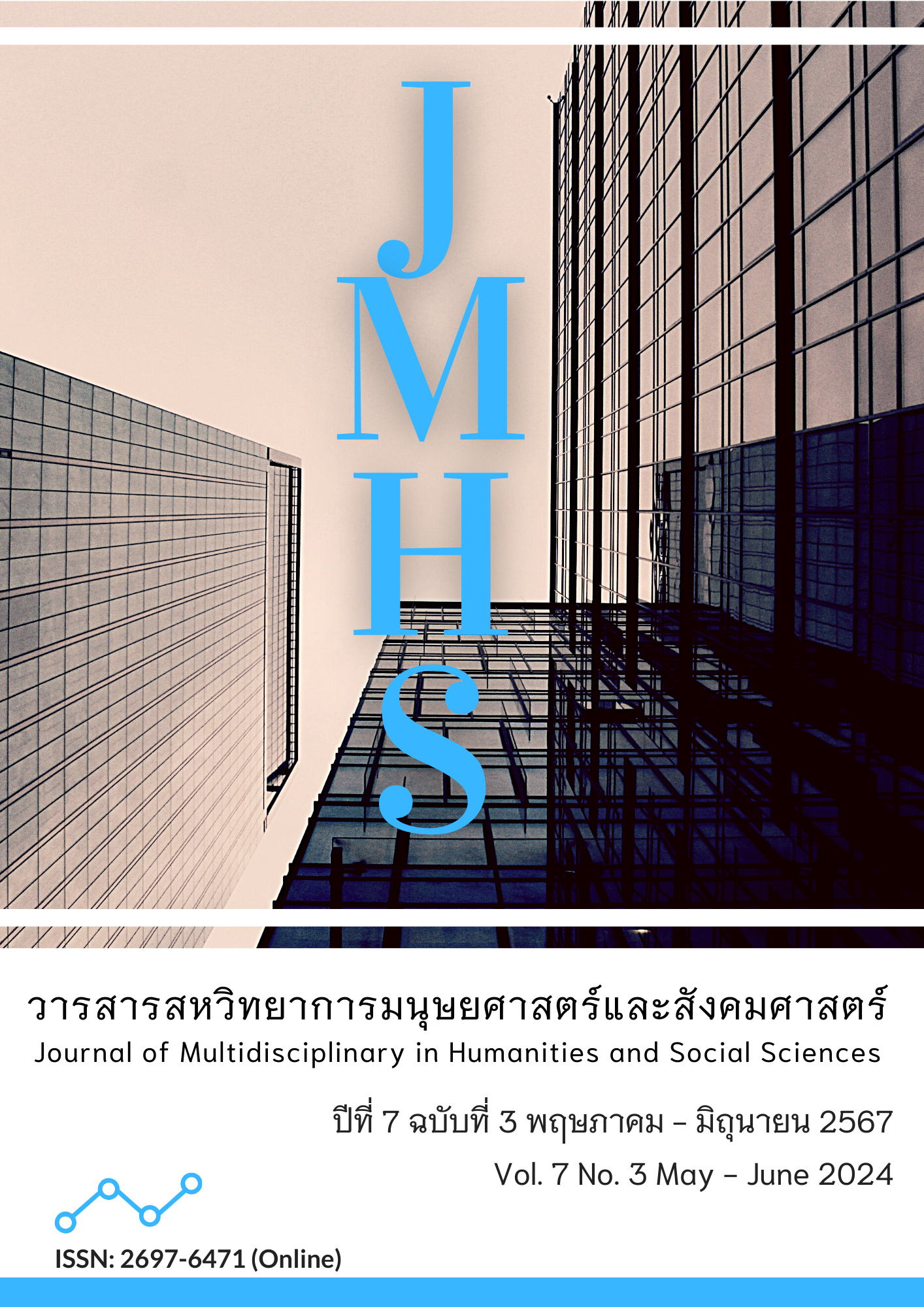Chinese Peony Culture: Symbolic Interaction and Identity Construction in the Context of Chinese National Community
Main Article Content
Abstract
The peony is China’s national flower, called the “King of Flowers” by the Chinese for its large size, beautiful shape, rich color, and refreshing fragrance. It has become a symbol of national prosperity, people’s wealth, and good fortune and is a typical representative of Chinese cultural symbols. The objectives of this study were: 1) to summarize the symbolic components of Chinese peony culture; 2) to analyze the components of Chinese peony cultural imagery; and 3) to study the development and integration process of Chinese peony cultural imagery. This study used qualitative research methods to collect information about peony cultural symbols, connotations, and identity through literature and fieldwork. The research results were found as follows: 1) Chinese peony cultural symbols are diverse, complex, and dynamic; 2) peony cultural symbols are interpreted differently within the cultural community; and 3) peony cultural symbols interact to produce everyday interpretive items through a process of difference, recognition, and acceptance. From the process of transforming the symbolic imagery of peony culture, Exploring the typical process of constructing the symbolic identity of the Chinese national community.
Article Details

This work is licensed under a Creative Commons Attribution-NonCommercial-NoDerivatives 4.0 International License.
Views and opinions appearing in the Journal it is the responsibility of the author of the article, and does not constitute the view and responsibility of the editorial team.
References
Blumer, H. (1986). Symbolic interactionism: Perspective and method. University of California Press.
Cheng, J., Xi, L., Ye, J., & Xiao, W. (2014). The research of regional culture characteristics of tourism commodities based on cross-cultural experience. In Cross-Cultural Design: 6th International Conference, CCD 2014, Held as Part of HCI International 2014, Heraklion, Crete, Greece, June 22-27, 2014. Proceedings 6 (p. 24-34). Springer International Publishing.
Fan, L., & Sa, Z. (2012). Research on the regional culture of Chinese peony. Inner Mongolia Forestry Science and Technology, (03), 59-62.
Feng, X. (2023). Status and trends of research on Chinese ethnic communities. Manchu Studies, (04), 6-11.
Hao, S. (2020). Cultural confidence, cultural identity, and casting Chinese national community consciousness. Journal of Central South University for Nationalities (Humanities and Social Sciences Edition), (06), 1–10.
Lei, Y. (2008). Research on the cultural imagery of peony folklore(Master's thesis), Qinghai Normal University.
Lyu, M., & Zhang, P. (2022, July). Integration Research of Series Cultural Creation Based on Regional Features on Interactive Packaging Design--Taking Luoyang Peony Crisp as an Example. In 2022 3rd International Conference on Language, Art and Cultural Exchange (ICLACE 2022) (p. 616-619). Atlantis Press.
McCowan, C. J., & Alston, R. J. (1998). Racial identity, African self–consciousness, and career decision-making in African American college women. Journal of Multicultural Counseling and Development, 26(1), 28-38.
Pu, L.-C., Wang, Y., & Zhang, Y. Y. (2023). The path of “form, sense, and effect” of non-genetic inheritance to promote the education of casting a firm sense of Chinese national community: An analysis based on the federal non-legacy program “Hua’er.” Ethnic Education Research, (06).
Qing, J., & Xu, X. (2018). Chinese national community consciousness: Conceptual connotation, element analysis, and practical logic. Ethnic Studies, (06), 1–14.
Wang, Y., Qin, S., Zhang, W., & Tan, M. (2021). Value internalization and identity cohesion of red tourism in ethnic areas: Representation, process, and mechanism. Tourism Forum, 14(6), 13.
Wei, W. (2009). A comprehensive study of Chinese peony culture(Master's thesis), Henan University.
Xi, J. (2019, September 28). Speech at the National Commendation Conference on National Unity and Progress. People's Daily, p. 002.
Zhan, X. (2013). Political identity in the perspective of cultural identity. Chinese Social Sciences, (9), 13.
Zhang, H. (2004). Natural attributes of Chinese flower culture and its humanistic connotation. Journal of Inner Mongolia Agricultural University: Social Science Edition, (4), 2.
Zhang, Q. (2007). Study on the origin and formation of Chinese flower culture (II)-The relationship between the formation of Chinese flower culture and the long history of Chinese civilization and thousands of years of flower cultivation. Journal of Beijing Forestry University, (S1), 5.
Zhang, Q., & Xu, H. G. (2012). Research on subject-guest interaction in ethnic tourism: Based on the perspective of symbolic interactionism. Thought Front, (3), 4.


